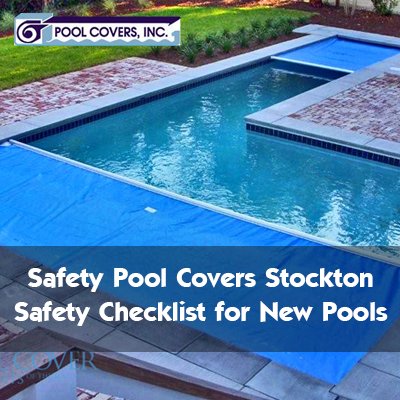
Having a brand-new swimming pool is a paradise, but it also means new responsibility. You want to keep your pool environment clean and as safe as possible. One of the ways to do this is to install safety pool covers in Stockton.
You want to make sure that your swimming pool is a place for fun and making great memories, and not a place for trouble and tragedy. Thus, before the fun starts, it is important to come up with a new pool safety checklist to make sure that the pool environment is safe for everyone who might have access to it. This includes children, pets, elderly people, people with disabilities or people who cannot swim.
Considerations for your safety checklist
Keep your pool patio free from clutter
It may be a no-brainer, but people neglect this precaution too often. Clear anything that surrounds your swimming pool, such as scattered toys and swimming gear left from the previous pool session. These objects might cause someone to accidentally step, trip and fall into the pool, or land onto the surface of the patio which can cause injuries.
Make sure that everyone wears and uses appropriate safety swimming gear
Make sure that everyone wears proper and swim-level clothes and safety gear, such as life jackets and floaties.
Check the pool’s ladders and rails
Why is this an important safety measure? Weak and wobbly rails and ladders could lead to falls which result in injuries or make it harder for someone to come out of the water after swimming. Hence, it’s a good idea to regularly check these fittings in your swimming pool, to see whether or not they still need to be fixed or re-positioned.
Set rules for proper child behavior at the pool site
Establish and enforce rules for appropriate child behavior at the pool area such as “Walk, don’t run,” and “No diving – shallow water.” Also, instruct them not to throw hard objects (like hard and rigid plastic toys or swimming aids, etc.).
Let the children know that they need supervision
It is important to let the children especially the smaller ones know that they need supervision as soon as they enter the pool area. Let them know that they are not allowed in the pool or around the pool area unless there is proper supervision at that time.
Learn CPR and have a first-aid kit handy
It is also ideal that you should learn how to perform CPR, as well as having a first-aid kit immediately available on the site to treat scrapes and wounds as a result of accidental falling at the pool’s patio. Take CPR classes. It is always better to be prepared in case of emergency or some unforeseen circumstances.
Install safety equipment and multiple levels of safety products at the pool site
Make sure that you install proper safety equipment at the pool site, such as building a fence or a barrier around the pool or installing a pool alarm.
Or better yet, add another security feature by installing a safety pool cover on your swimming pool. One of the benefits of a safety pool cover is that it acts as an effective deterrent for children who might come near the pool. Even if your child might trip and fall onto the pool cover, you do not have to worry chances are, he or she will end up landing on the pool cover!
A safety pool cover is still the best way to protect your child against drowning. An ASTM-certified pool cover is made of quality materials and is sealed securely on all sides of the swimming pool. This makes it impossible for a child to climb over or sneak under the cover to get to the water.
Your new swimming pool will be a place of fun and relaxation with your family and friends. However, always be reminded that safety should always be a top priority, especially if you still have little children who might have access to the swimming pool. Including all of the seven pool safety considerations will establish a high level of pool security that will prove helpful in preventing drowning accidents.
Whether new or old, swimming pools need a safety barrier to protect your loved ones from drowning. Using safety pool covers in Stockton is the surest way to prevent not just children but also pets, elderly people and people from disabilities, from having access to the pool water.









